Search Results
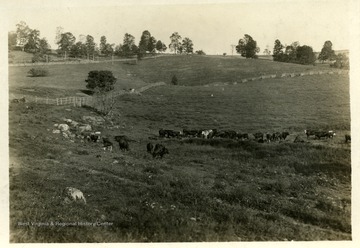
- IDNO:
- 001593
- Title:
- Cattle Grazing on a West Virginia Farm
- Date:
- undated
- Description:
- Farmland and cattle in the rolling hills of W. Va.
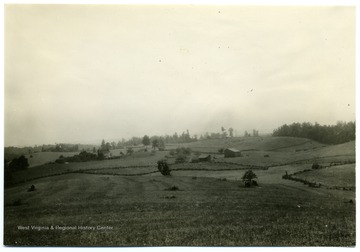
- IDNO:
- 001594
- Title:
- Gently Rolling Upland Farm
- Date:
- undated
- Description:
- The gently rolling upland of a farm in West Virginia. U. S. Department of Agriculture, Bureau of Agricultural Economies, Photographic Section, number 18417.
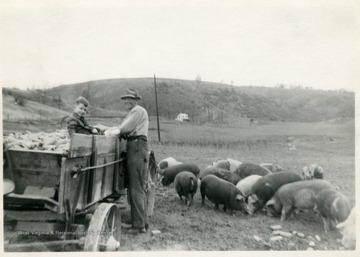
- IDNO:
- 001595
- Title:
- Scott, C. W. Feeding His Hogs in Petersburg, W. Va.
- Date:
- undated
- Description:
- C.W. Scott feeding his hogs in Petersburg, W. Va. A small boy is helping him throw corn cobs to the pigs from the back of a wagon.

- IDNO:
- 001596
- Title:
- Chicken Farmers With Their Chickens
- Date:
- undated
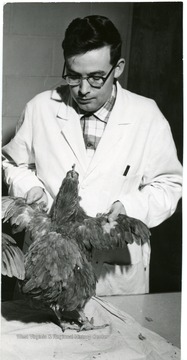
- IDNO:
- 001597
- Title:
- Mellen, W.J. with a Rooster
- Date:
- undated
- Description:
- W.J. Mellen holding a rooster by its wings.

- IDNO:
- 001598
- Title:
- Cattle Grazing on a West Virginia Farm
- Date:
- undated
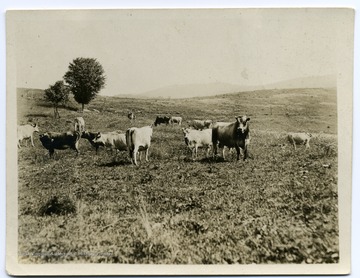
- IDNO:
- 001599
- Title:
- Greenbrier County Cattle
- Date:
- undated
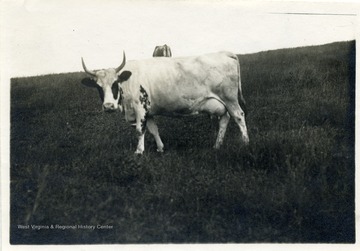
- IDNO:
- 001600
- Title:
- Ayrshire Cow
- Date:
- undated
- Description:
- Text on back reads, 'One of our highest priced Ayrshires. I am planning to use this in a little cut.'

- IDNO:
- 001601
- Title:
- Herding Cattle on the C.W. Scott Farm in Petersburg, W. Va.
- Date:
- undated
- Description:
- Cattle being herded into a barn on the C.W. Scott farm in Petersburg, W. Va.
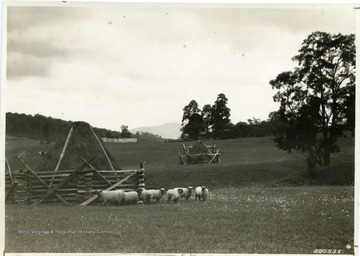
- IDNO:
- 001610
- Title:
- Sheep Grazing and Hay Stacks
- Date:
- undated
- Description:
- Picture of sheep grazing next to a hay stack, with another stack in the distance. Photo by the U.S. Forest Service.
![West Virginia Farm Land Picture of a house surrounded by fields. Text on back reads, 'So land [sic] as the existing buidings stand much of poorer land will remain in use. Their replacement in the Dekalb stony loam and Dekalm stony silt loam land is ordinarily not an economical investment.' U.S. Department of Agriculture, Bureau of Agricultural Economies, Photographic Section number 18433.](/thumb/001611.jpg)
- IDNO:
- 001611
- Title:
- West Virginia Farm Land
- Date:
- undated
- Description:
- Picture of a house surrounded by fields. Text on back reads, 'So land [sic] as the existing buidings stand much of poorer land will remain in use. Their replacement in the Dekalb stony loam and Dekalm stony silt loam land is ordinarily not an economical investment.' U.S. Department of Agriculture, Bureau of Agricultural Economies, Photographic Section number 18433.
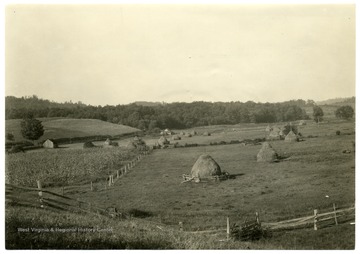
- IDNO:
- 001614
- Title:
- Atkins Silt Loam in the Broad Valley Bottoms has Always been Used for Growing Hay
- Date:
- undated
- Description:
- Valley with haystacks. Text on back reads, 'The atkins silt loam in the broad valley bottoms has always been used for growing hay.' U.S. Dept. of Agriculture, Bureau of Agricultural Economies, Photographic Section, number 18419.










![West Virginia Farm Land Picture of a house surrounded by fields. Text on back reads, 'So land [sic] as the existing buidings stand much of poorer land will remain in use. Their replacement in the Dekalb stony loam and Dekalm stony silt loam land is ordinarily not an economical investment.' U.S. Department of Agriculture, Bureau of Agricultural Economies, Photographic Section number 18433.](/thumb/001611.jpg)
